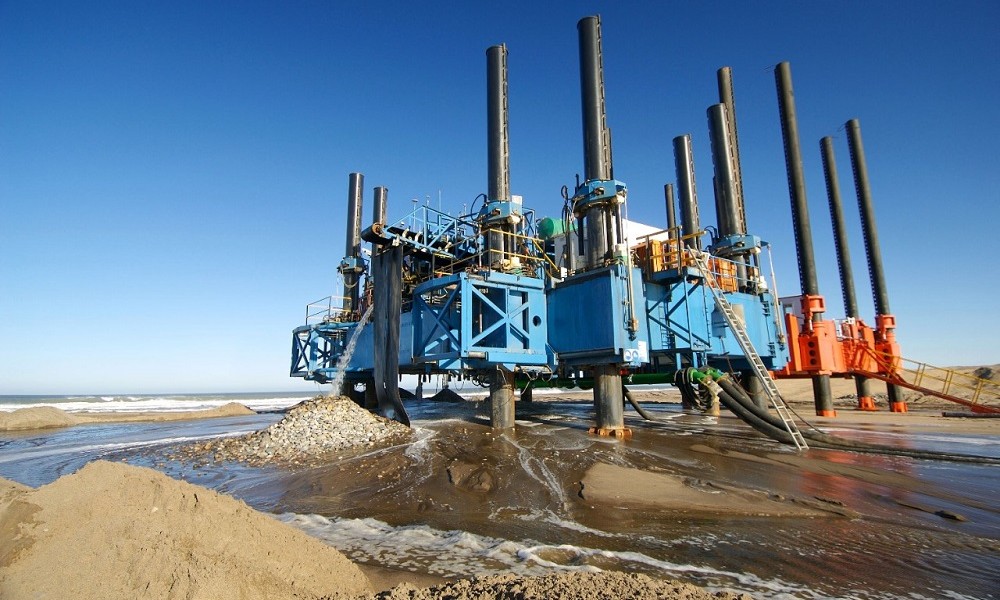“We maintain a cautious view of this year. Although the first two months of 2016 were stronger, this was primarily due to the marketing policy pursued by the company, which we carried out in relation to customers and the market in the 2nd half of 2016.” “We are seeing improved demand from the midstream for rough diamonds. However, we remain mindful of the need for a cautious approach as the recovery continues.”
“We’ve had a good start to the year. Is that sustainable? I don’t know. We’ll only be able to make that call at the end of the second quarter.”
These three comments – made respectively by Andrey Zharkov, President of ALROSA, Philippe Mellier, CEO of De Beers and Clifford Elphick, CEO of Gem Diamonds – demonstrate that of all possible behavior patterns diamond mining leaders are choosing caution these days. It is premature to speak about full recovery in the diamond market, since the problem of low margins in diamond manufacturing has not been solved and there is no reason to expect growth in jewelry demand in China. The main role in revitalizing the market in January and February, according to the unanimous opinion of all experts, was played by the midstream – diamond traders and diamond manufacturers, – but excessive transfer of risks into this segment on the backdrop of incomplete health in other parts of the diamond pipeline may provoke a situation of oversaturated market, as was the case in 2015.
Hopes for a favorable turnabout
Still, the largest diamond miners do have reasons for this temporary “dizziness from success.” The sales carried out by ALROSA and De Beers in January and February were ahead of market expectations. Within these two months of 2016, the both companies, controlling two-thirds of the world’s rough supplies, sold almost $ 2 billion worth of diamonds availing of the fact that it was time for the midstream to restock. ALROSA’s revenue for the two months – $ 780 million – was at the level of the October-December period last year, while De Beers’ sales exceeded the results of the last three months of 2015 almost twice ($ 500 million).
The strong results of the first sights in 2016 give rise to hope for a favorable turnabout of the diamond market, according to Deutsche Bank. “However, we are inclined to attribute the recent increase in demand rather to restocking aspects, than to a full recovery of the market,” the Bank’s review said. This motif is now being repeated in one form or another by all experts.
“Over the last month, we have seen relatively large sales of diamonds by De Beers and ALROSA, accompanied by mixed data on demand. Meanwhile, prices for rough and polished diamonds remained stable. This suggests that the road to recovery will be tortuous, despite the strong start to the year,” the Morgan Stanley’s report said.
The tight sales practiced by diamond miners on the backdrop of overstocked inventories in the midstream are over, Citibank said in its review. However, there still remains considerable uncertainty as to whether demand will recover to a level that will outpace supply growth: “We believe it will not, and trade levels observed in February added to our doubts. Diamond prices are likely to be at the current level until 2017.” The current price levels are viewed by Citi as “depressive.”
“Investors have been somewhat encouraged by the results of the sights, which ALROSA and De Beers held in January and February and which turned out to be better than expected, as well as by a certain stabilization of prices for polished diamonds. However, in our opinion, it is too early to talk about the final reversal of the negative trend, as end-consumer demand in China remains quite sluggish, and the results of the sights in the first quarter of 2016 may only reflect the restocking needs of diamond manufacturers, which may be a temporary phenomenon,” the review of Sberbank CIB said.
“A good start to the year has mainly resulted from the midstream transition to restocking triggering recovery in demand for rough,” the Otkrytie Bank said. “Diamond market has stabilized, but remains vulnerable, and it is too early to say that the market has embarked on the road to recovery.”
According to Otkrytie, the main intrigue now is whether the success of the first two months will be sustainable or it was just a non-recurrent surge pulse caused by a regular cycle change in the “diamond pipeline“. “Our view is that business activity will slow down in the coming months, when the market will see an influx of newly cut diamonds, while diamond demand will remain weak. The upward trend in the price of diamonds outlined in November was more due to shortages after weak purchases of rough in the second half of 2015, rather than due to improved demand,” the investment bank said.
“Higher than usual levels of diamond reserves and weak demand from end-consumers will hinder any recovery in diamond prices for at least 12 months,“ analysts from London-based Liberum Capital said, according to Bloomberg.
“Restocking may contribute to a rise in prices for rough diamonds, but in the long-term growth is unlikely, because margins in the midstream remain under pressure, and polished prices will not recover in the weak market conditions observed in key regions,” Liberum opines. According to this company’s analysts, it may take at least a year to restore prices, because major producers accumulated large stocks of rough, while demand for it in such markets as China remains low.
“The results of the last trading sessions held by diamond miners were strong mainly due to the midstream players’ need to replenish stocks,” Morgan Stanley continues. “Since restocking will sooner or later subside, we expect consequent slowdown in rough sales by ALROSA and De Beers, which will lead to an increase in the diamond stocks held by the miners. This process will continue throughout 2016.”
De Beers and ALROSA reduced their supplies by about a quarter last year to stop the decline in prices. As a result, the total inventory of ALROSA, De Beers and Dominion Diamonds reached 34.1 million carats (27% of global production) in 2015 and this year it will hit 45.2 million carats (35% of global production), according to Morgan Stanley’s estimates. ALROSA proclaimed that its target for this year will be to avoid accumulating diamond stocks, which reached 22 million carats at the end of 2015 and which the company estimated at $ 2.5 billion.
What prevents long-term growth?
The excessive stocks amassed by diamond miners should sooner or later reach the market, which, as it was demonstrated last year, will not have a favorable impact on the state of affairs in the midstream. Another obstacle in the way of long-term growth in the diamond market is the lack of evidence of any increase in demand for jewelry from end consumers. The stable jewelry consumption in the United States is the foundation, which underpins the diamantaires’ confidence in demand for their products, but the deceleration of the Chinese economy in the past year delivered a painful impact on rough prices, which went down by 18%. This situation aggravates the problems facing the market players in India, where, after the recent bankruptcies of two major jewelers, it is not excluded that a new round of tight liquidity will follow resulting in lower appetite for rough diamonds.
Citi’s analysts held a meeting with the New York diamond traders, who noted that January was a month of recovery in trade volumes, accompanied by large discounts. However, in February business activity was significantly decreased compared to the January level, as it was recognized by all the market players surveyed by Citi (expensive investment diamonds were particularly affected). This correlates with the data offered by Chow Tai Fook. The largest jewelry retailer saw its revenue from diamond jewelry sales during the Chinese New Year (January 25 to February 14) sink by 20% year-on-year.
China, which accounts for 16% of global demand, continues to see its jewelry sales go south. This is due to the fact that an increasing number of Chinese are making purchases abroad, as well as due to the deterioration of consumer sentiment in the luxury segment caused by the downturn and recent volatility in the stock market. Chow Tai Fook’s management also announced a pessimistic outlook for the full quarter.
Without demand growth in China it will be difficult to offset the natural slowdown in the restocking process and maintain the January and February sales levels, Morgan Stanley believes. However, the stability and strength of demand in the United States permits to hope that the expected slowdown after the completion of the restocking cycle will be not so dramatic, Morgan Stanley said. The US accounts for 42% of diamond demand. Diamond sales and prices for loose diamonds and diamond jewelry are growing. Signet reported a strong fourth quarter reflecting the results of the festive period. The company’s sales rose by 4.9% year-on-year (vs. 4.2% a year earlier) for the 13 weeks ending January 30, 2016. However, Tiffany’s same store sales for the quarter ended January 31, 2016 fell by 9%, which was worse than analysts’ forecasts, who expected them to decline by 4.4%.
While demand is falling due to the strengthening of the dollar and the deceleration of the Chinese economy, diamond miners’ output is growing along with their stocks, making the supply and demand dynamics in 2016-2017 unfavorable for prices. Having overcome the effects of production cuts in 2015, global diamond production will grow by 4% in 2016 and by 9% in 2017, according to Morgan Stanley. Besides, the recent development of the Luaxe diamond pipe in Angola may add 6% to the production forecast starting from 2021 (140 million carats).



